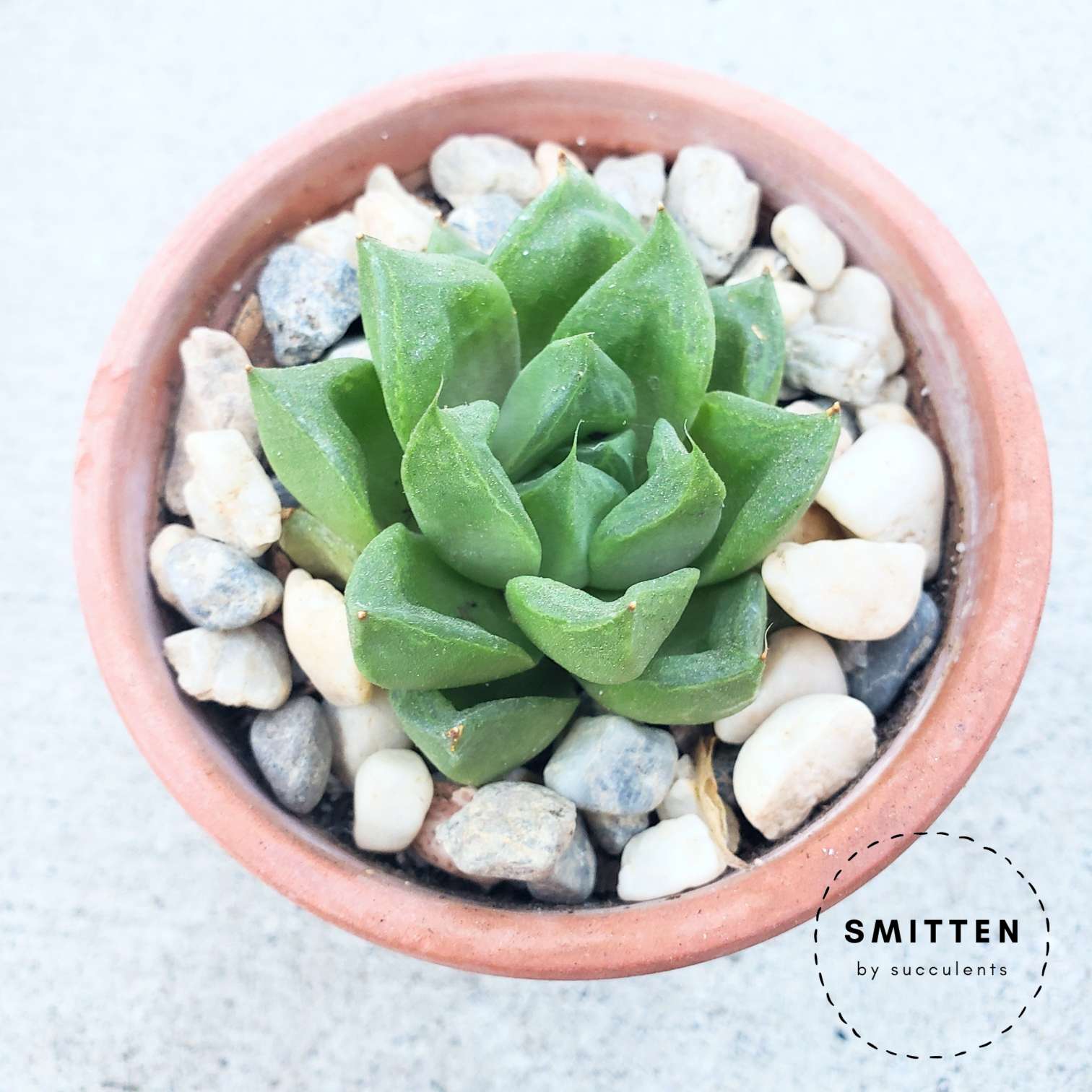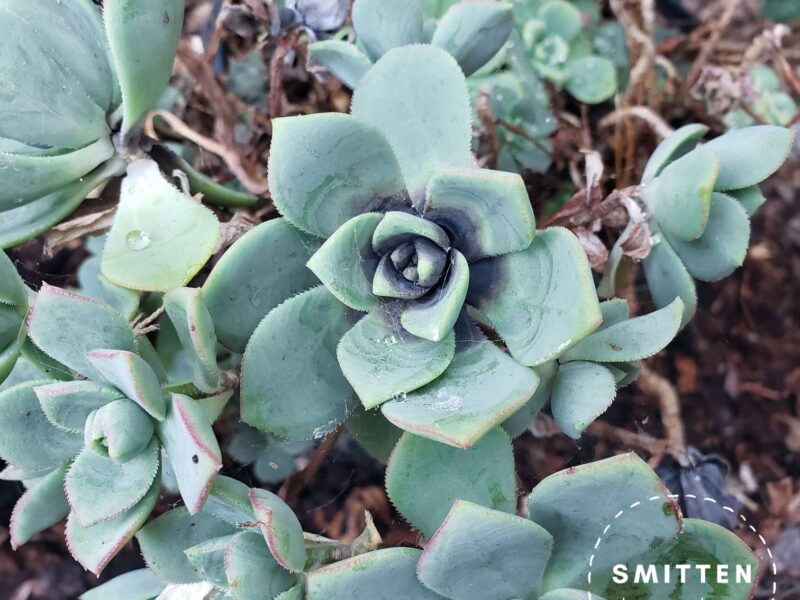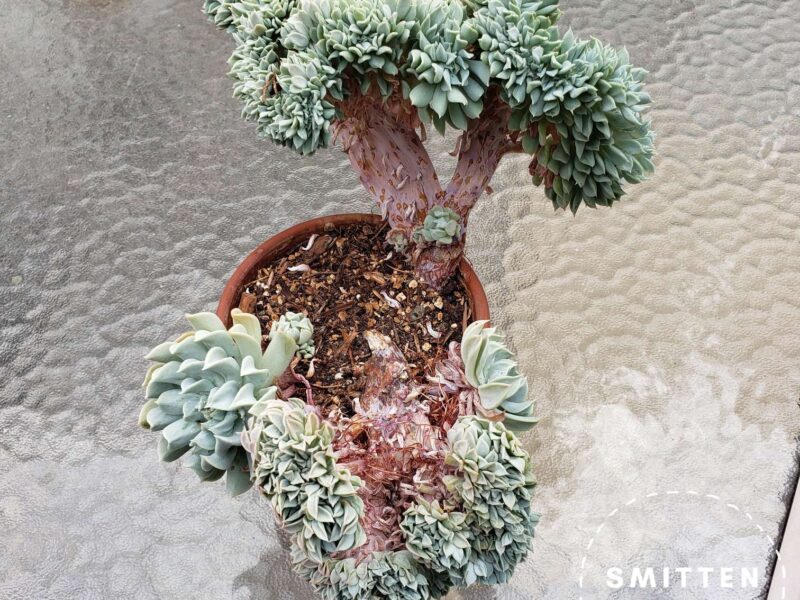When should you water your succulents? This is an important question for succulent owners. Succulents are drought-tolerant plants, so they’re susceptible to overwatering, which causes rot and death.
You might be inclined to water your succulents on a schedule, but succulents do not fare well when watered on a schedule. Watering on a schedule can easily lead to overwatering them.
The best time to water your succulents is when they show signs of thirst.
When I started growing my collection, I heard the advice above, but I didn’t heed it. I decided I’d water every two weeks because watering on a schedule would be easier for me. I thought this would take the guesswork out.
At first, it felt like my plan was going well, but it became more and more laborious having to water every single plant at the same time (and my collection was growing). So that throws the convenience factor of my plan out the door. (I was lucky because it was summer in California, so I didn’t run into rot).
But the worst aspect of watering on a schedule was that I still felt lost. I knew I wasn’t doing it right, and I wasn’t learning what my succulents needed. With these two feelings combined, I decided to heed the advice and water only when the succulent was showing me it was thirsty.
What are signs of thirst?
Succulents are succulents because they store their water in their leaves. When they’re thirsty, they have used some of this water, and they will look dehydrated. These are some common signs of thirst that may appear in some succulents but not all:
- The leaves have wrinkles.
- The leaves look more hollow or concave.
- The leaves are no longer firm. They are thin or flimsy. They may even look wilted.
- When you hold the leaf on its sides and gently squeeze, they have “give”.
If they’re a little dehydrated, the signs of thirst won’t be as apparent. The more dehydrated they are, the more apparent the signs are.
Here are some photo examples showing thirst:
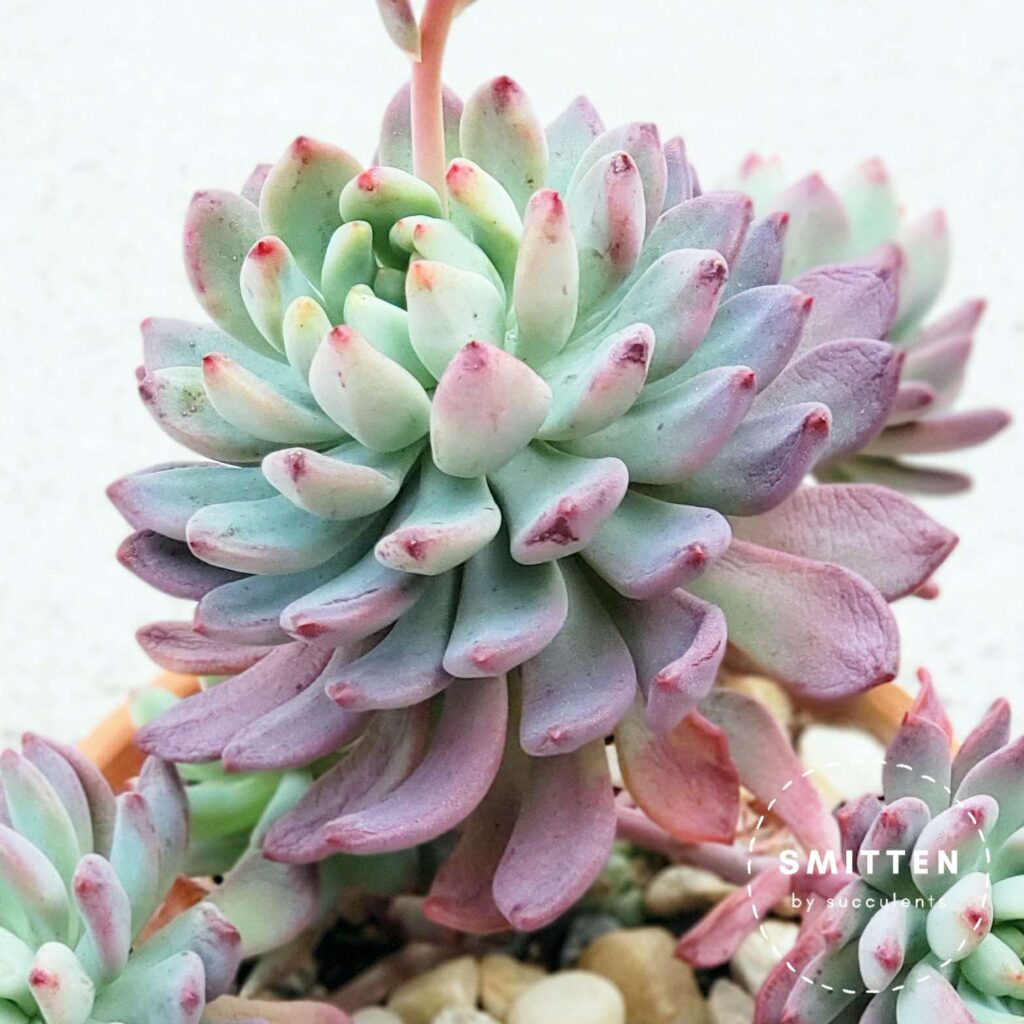
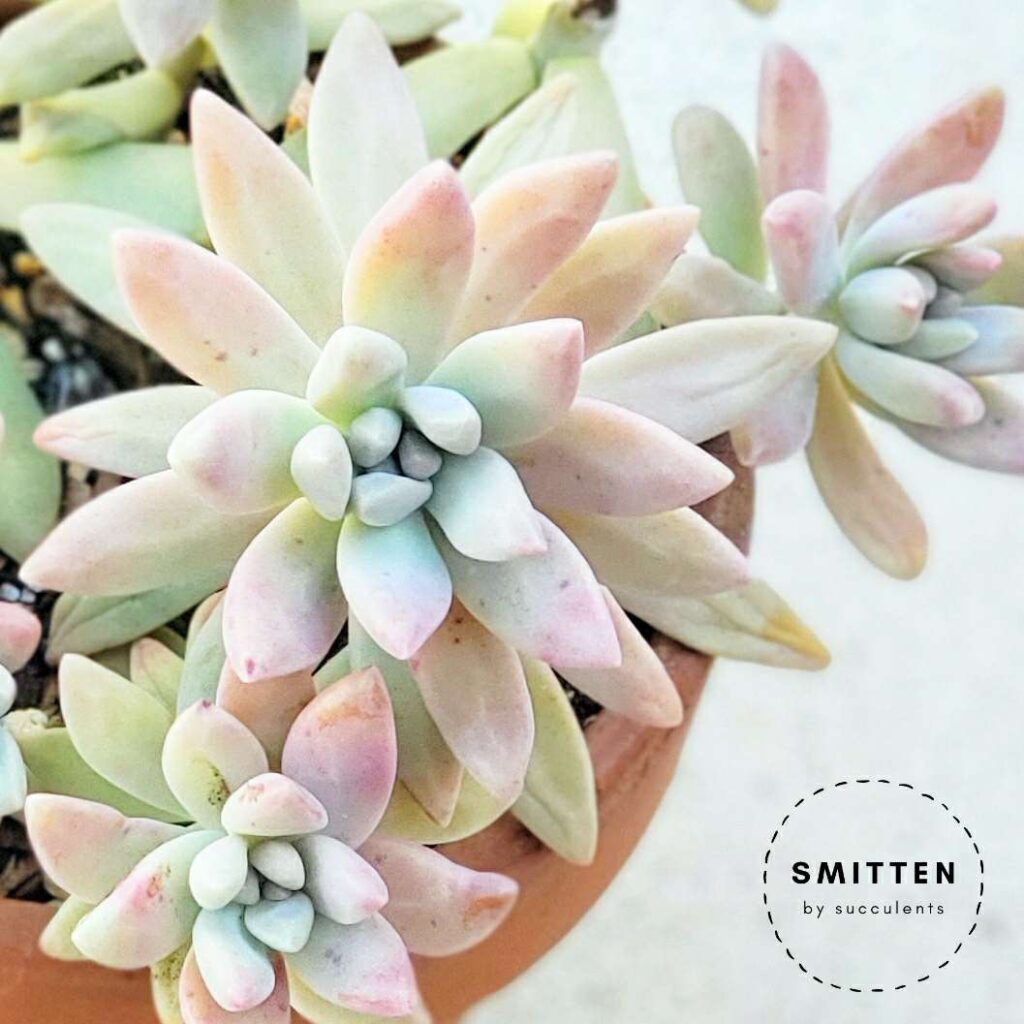
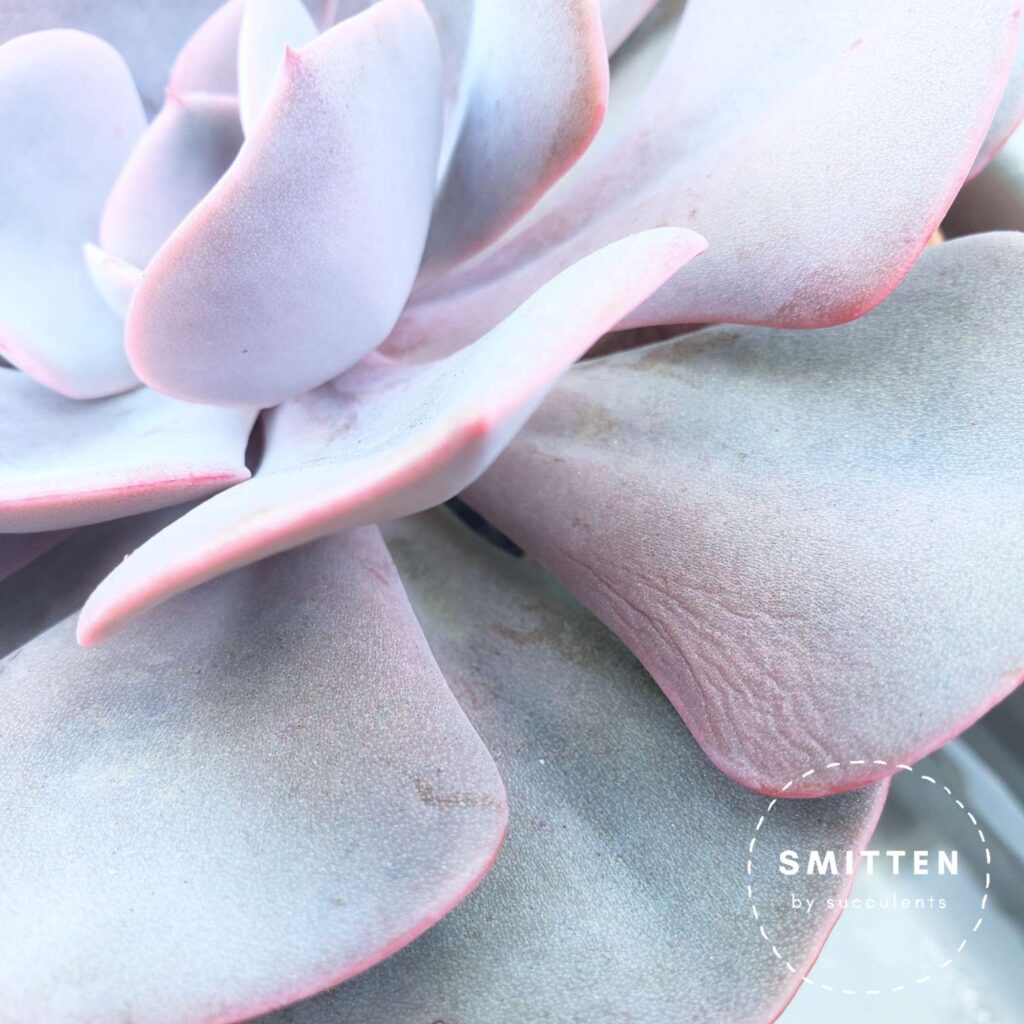
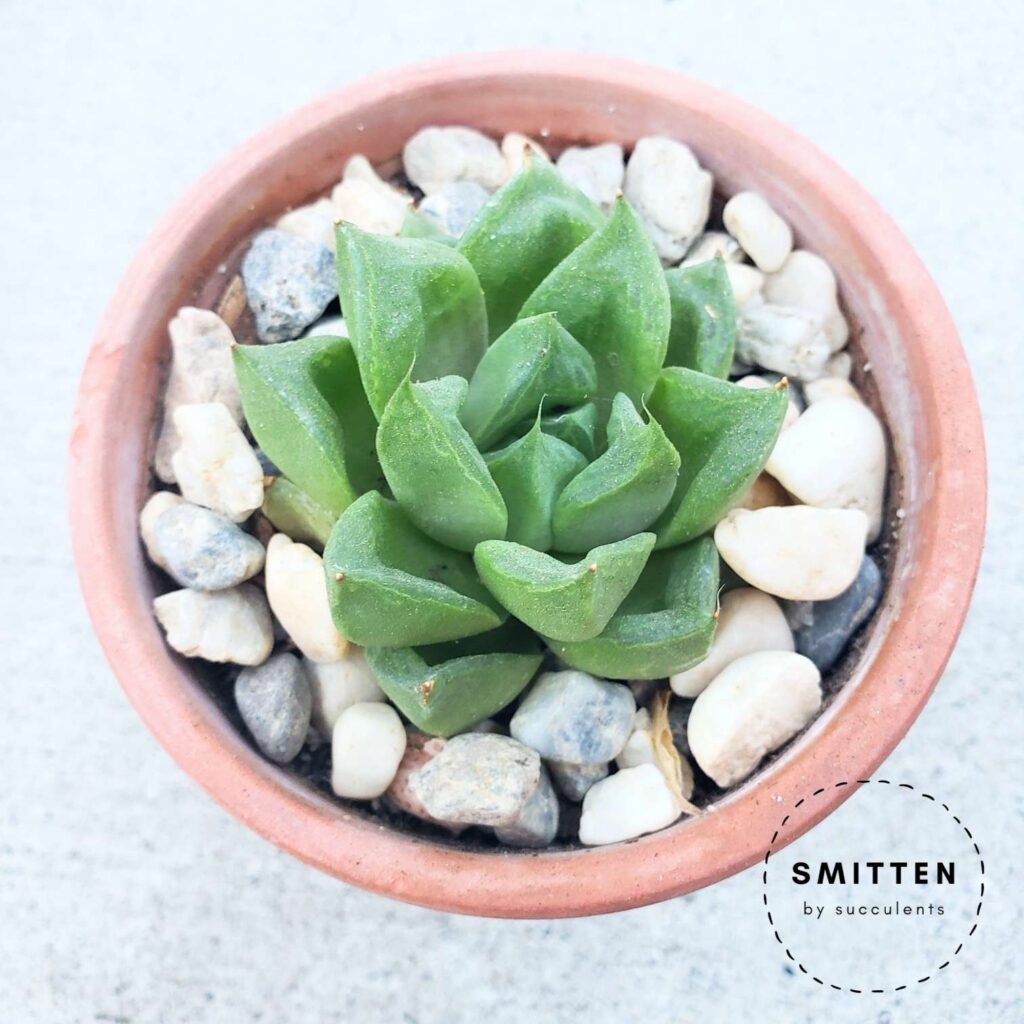
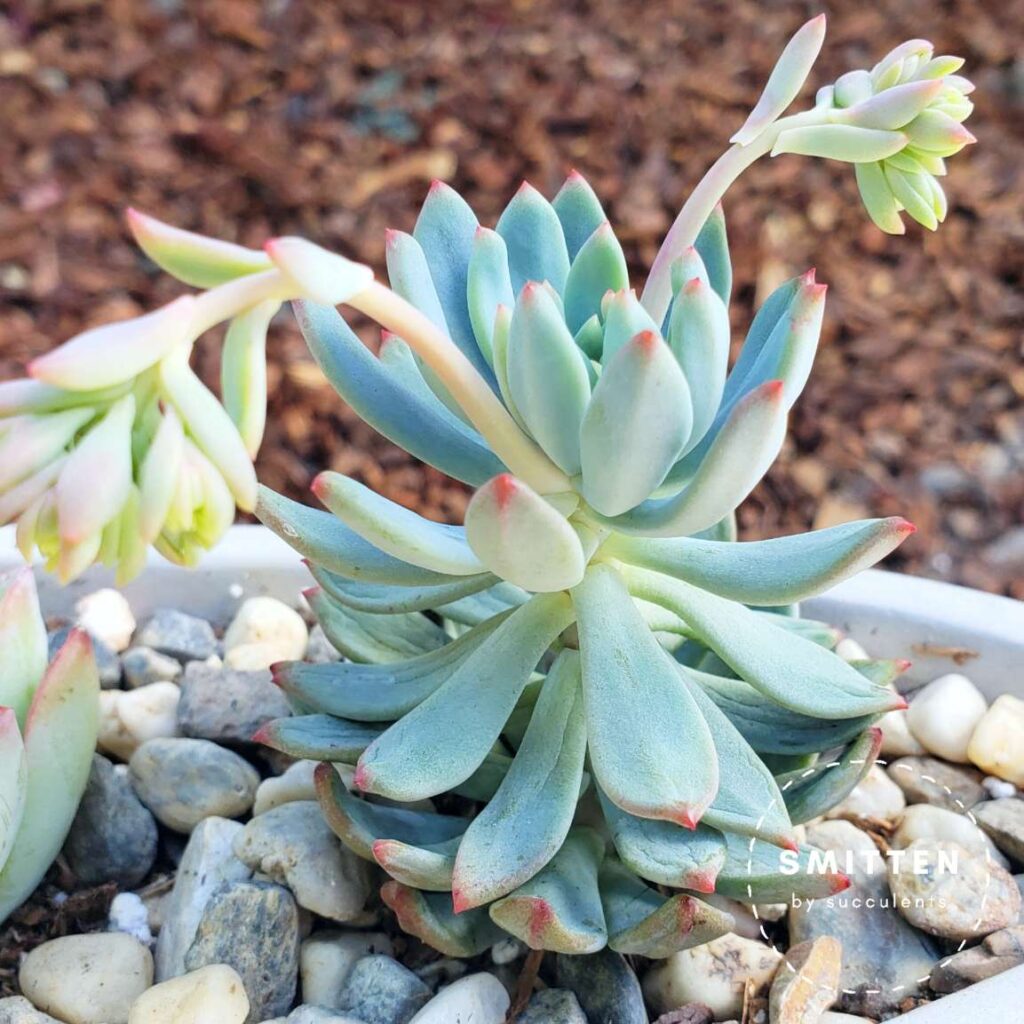
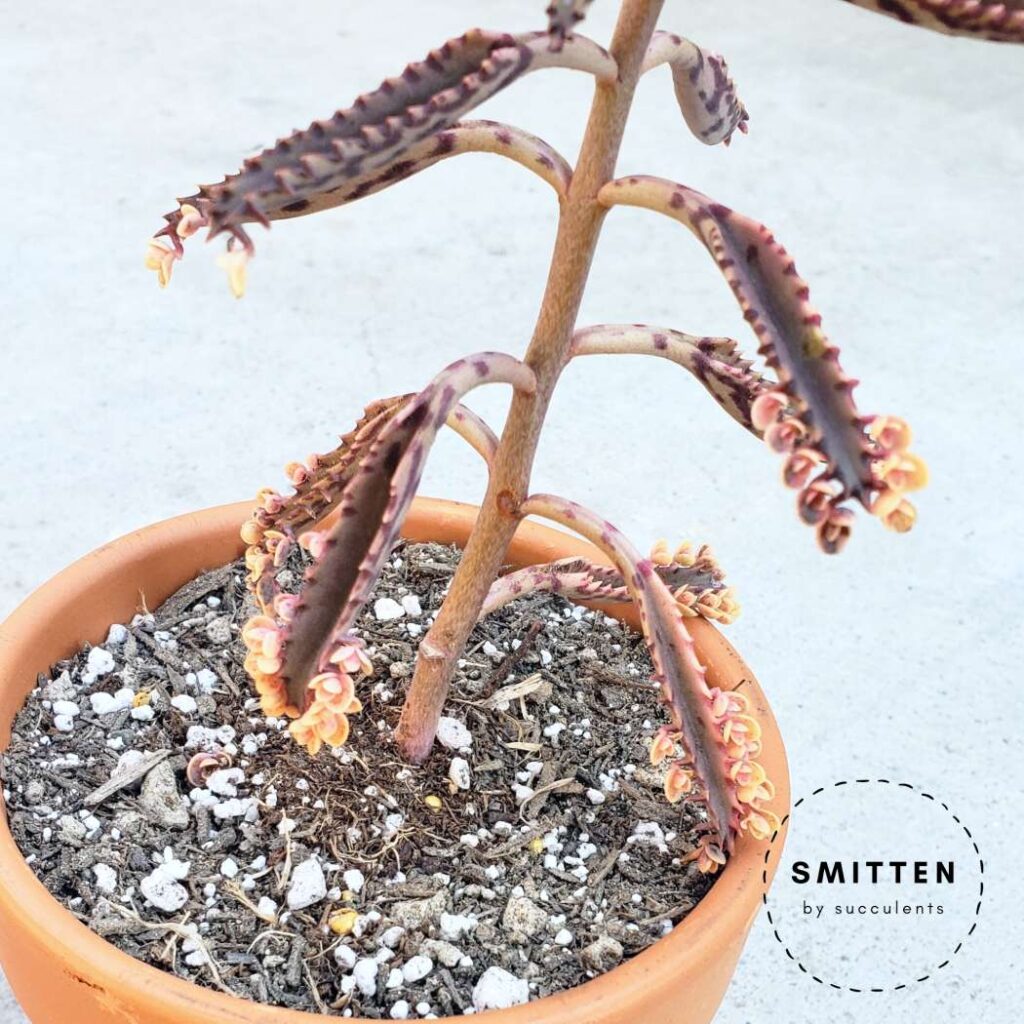
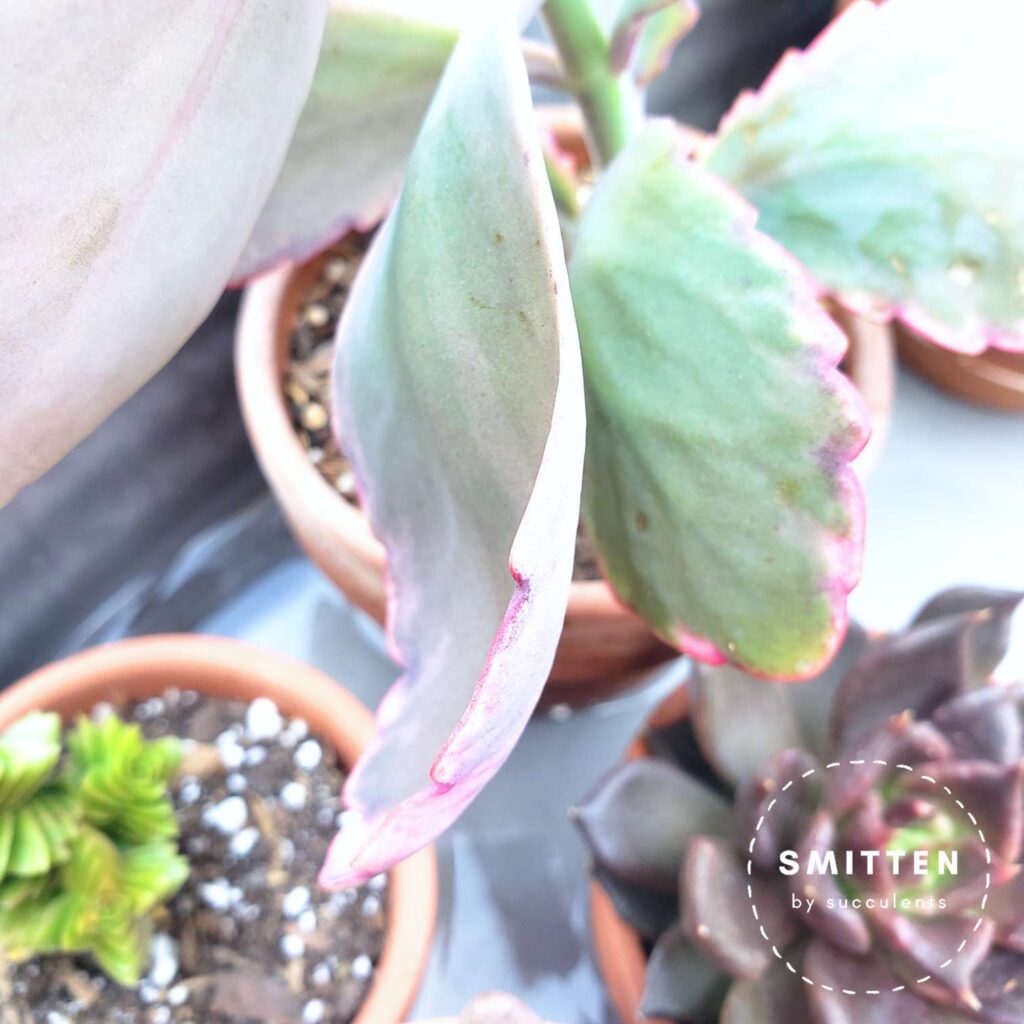
How much do you water?
OK so your succulent is showing signs of thirst. Since they’re drought-tolerant, you might think they only want a little water. On the contrary, they’d like their roots to be soaked. Think flash flood in the desert. They prefer all the soil their roots touch to get wet. Then they want to dry fast much like a desert environment. You might hear this referred to as the soak and dry method.
If you’re watering a potted succulent, you want to make sure all the soil in the pot gets wet, and the water should drain out the pot’s drainage hole. (Pot tangent: The pot should have a drainage hole and should also be an appropriate size for the succulent’s size. If it’s too small, it might be root bound. If it’s too big, it will stay wetter longer). The soil should also be well-draining. If your pot has a saucer to catch excess water, if the saucer gets full, remove the excess water to allow the succulent and soil to dry.
If the succulent is in the ground, you’ll want to water enough to get the succulent’s roots soaked. It is also preferably planted in well-draining soil. The ground will help drain the water.
I watered my succulent. Now what?
After watering, how long your succulent takes to plump back up depends on how dehydrated it was. If you addressed its thirst early, you usually will see it revive within a few hours to 1-2 days. By revive, I mean the leaves are plump and firm again, and it no longer shows signs of thirst.
The more dehydrated it was, the longer it will take to plump back up. If it’s a very dehydrated succulent, it can even take a whole week to plump back up. The timeframe also depends on the species of succulent and its size.
If your succulent hasn’t plumped back up within a week and looks just as dehydrated and wrinkly as before, then you might want to check on the roots. The roots may be damaged from something like rot or it is root-bound. If it is rot, then you will need to cut the rot off and propagate. If it is root-bound, you should repot it into a bigger pot.
If you have any questions about watering your succulents, let me know below.
